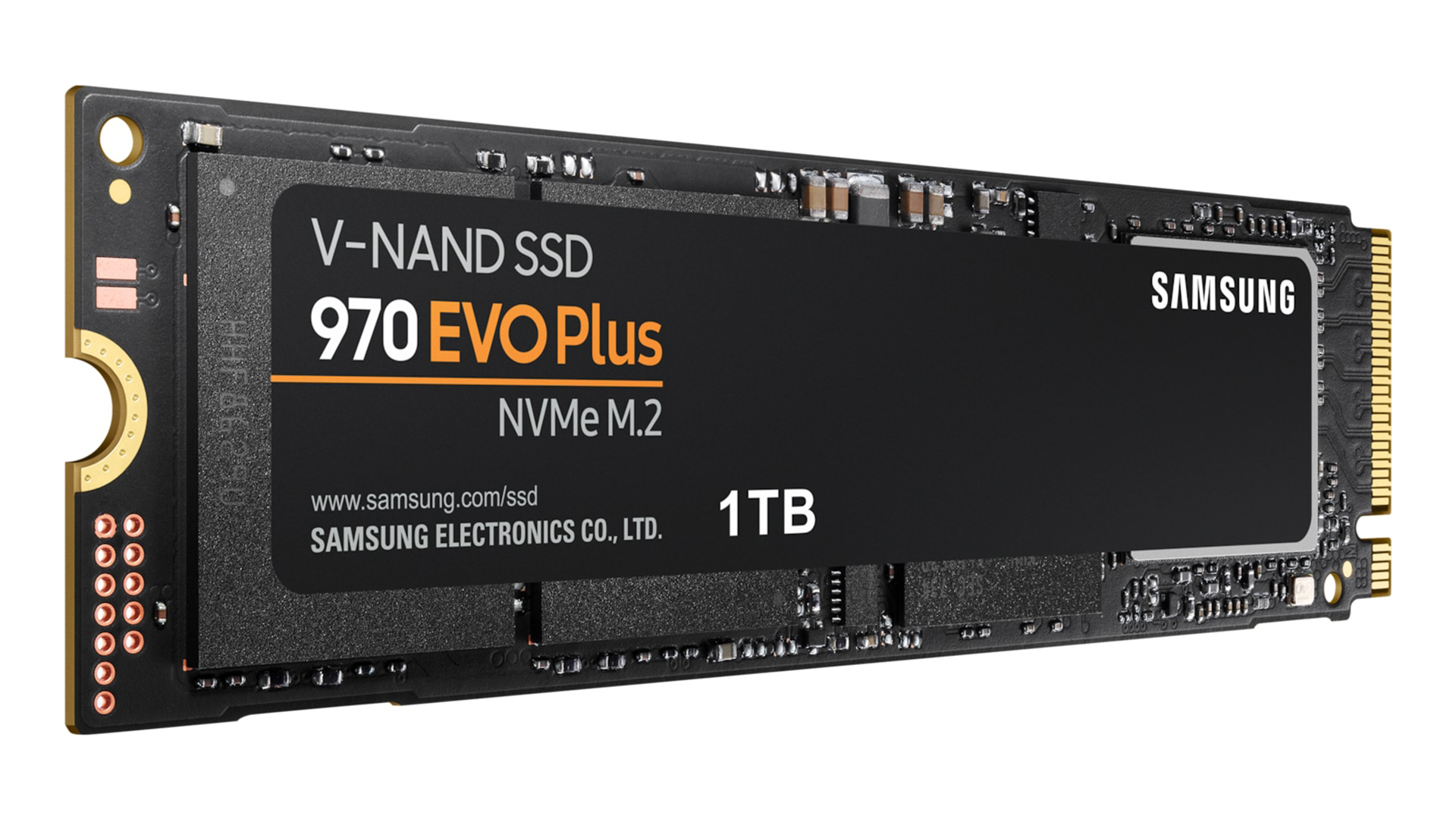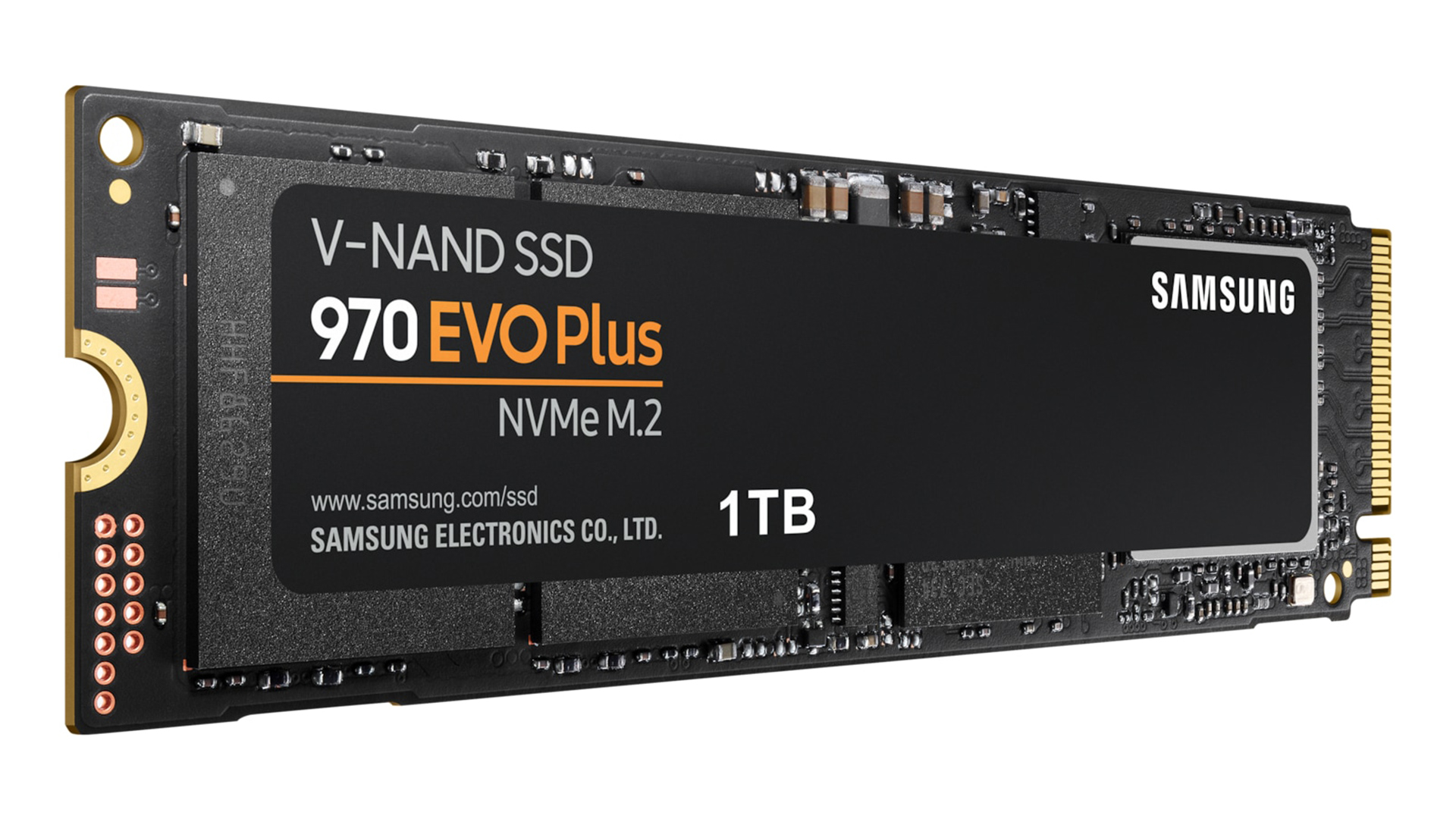
 This is a Samsung M.2 SSD. It's very fast, but is is suitable for everything?
This is a Samsung M.2 SSD. It's very fast, but is is suitable for everything?
A successful post production workstation needs, arguably, three kinds of storage, two of which are easy to recommend, and one of which gets a bit complicated.
Read parts 1, 2, 3, and 4 of this series.
Software storage
Like any computer, a workstation needs somewhere to store software, including the operating system. Any modern machine will use solid-state storage for this; software tends to comprise a lot of small files that are accessed in a fairly random pattern. Until recently, it was normal for flash storage devices aimed at this task to, in effect, pretend to be a hard disk. Shaped like a compact disk intended for a laptop, solid state disks plugged into the same SATA socket as a conventional hard disk, and as far as the computer was concerned they behaved in exactly the same way.
That’s what most people mean by an “SSD,” but modern motherboards also tend to have sockets for M.2 disks. M.2 devices sit in a specific type of slot on the motherboard, much like memory modules, so they don’t even take up much space. Current devices advertised as compatible with NVMe (for non-volatile memory express) generally connect to up to four lanes of the same PCIe bus that we discussed in the piece on motherboards.
That makes it both fast – PCIe 3.0 lanes can handle a gigabyte per second each, for a total of four gigabytes per second in both directions – and very immediate, with very few delays between the information being requested and being provided. The flash memory on most devices won’t be fast enough to completely saturate that four gigabyte a second bandwidth, but M.2 is certainly a breath of fresh air as regards sheer performance, and it’s really easy to install. Push, click, done.
Scratch space
Workstations in a lot of different industries need somewhere for temporary data, things like audio waveforms, fragments of rendered video containing complex effects, proxies and so on. Often this isn’t data that’s crucially important or needs to be backed up, since often it will be automatically recreated if it’s missing which only costs machine time. As the name suggests, it’s a scratchpad, a place for the system to jot things down. It’s often a very good idea that scratch space is fast.
There was a time when scratch space was actually the most demanding part of a workstation, because by its nature it’s likely to contain data that will be needed fast (a piece of video as part of a timeline, say) and in a random order. Fast M.2 has made this a lot easier, and it’s possible to put both scratch space and software on one drive. It’s more ideal to have separate space for scratch, both for performance and space reasons; many motherboards have more than one M.2 slot. About the only limitation is the number of PCIe lanes available from a CPU, as we discussed in the piece on CPUs.
Media storage
We like to think that post production is a special field where we have a tough time, needing to deal with bigger files than other industries. And yes, content creation is one of the relatively few areas where desktop workstations are nowhere near being supplanted by mobile devices. Even Blackbird’s neat cloud-based edit system, in the end, does rely on big disk arrays full of high-bandwidth content, albeit tidied away in a data centre somewhere. When we’re not part of a big postproduction facility, though, we’ll usually need disks in our workstation.
And yes, conventional spinning disks still beat flash in terms of space for the money. That’s always been true, and while the gap has narrowed, it’s still fairly large, if only because media files have become more demanding (4K, 6K, 8K, HDR, high frame rate, etc.) and kept up the pressure on space. Absent really specific circumstances, we won’t be building solely flash-based workstations for cutting or grading moving pictures. Now, if we wanted to build a specialist machine for on-set work, that we wanted to be silent, battery-powered and blindingly fast at offloading camera cards, we might think otherwise, but generally we’ll be putting hard disks in workstations for a while yet.
There are a lot of ways of buying storage. An easy way is to grab a Thunderbolt or USB3 connected RAID device, and that’s particularly useful if you want to move large amounts of material between systems. Absolutely the most cost-effective and often fastest way of doing it is to simply plug hard disks into the SATA headers on the motherboard. Most motherboards have four or six, some have eight, and an eight-disk RAID is a very plausible arrangement for a modern workstation.
RAID is a subject all of its own which we covered in some depth a while ago (this is an old article, but the conclusions about RAID-10 being a good idea remain valid.) The RAID controllers on most ATX-sized, gamer-targeted motherboards are generally not as good as ones on plug-in cards, though RAID-10 is not that hard to do. Some people would recommend using the software RAID provisions that Windows provides, since the disks can then be plugged into any Windows workstation and will work fine.
Choosing disks is straightforward: look for types with a 7200RPM spindle speed, and google for benchmarks. The only other specification of note is cache memory, which can help sometimes. For instance, if an application requests disk blocks 1, 2, 5 and 6, then 3 and 4, the drive will retrieve all of those in numeric order and use cache memory to reorder them. That reduces the need to move the heads around, though with large video files things tend to be read in long unbroken sequences and cache may not be so useful. At the time of writing, the best price was probably on 4TB drives at around £100 each. £800 for a 16TB protected RAID-10 is a very good deal.
All you have to do is make sure there are enough 3.5” drive bays in the case and to ensure there’s enough power available, which I’ll discuss in the final piece. Next, though, a short piece on the much simpler concept of memory.
Tags: Technology


Comments